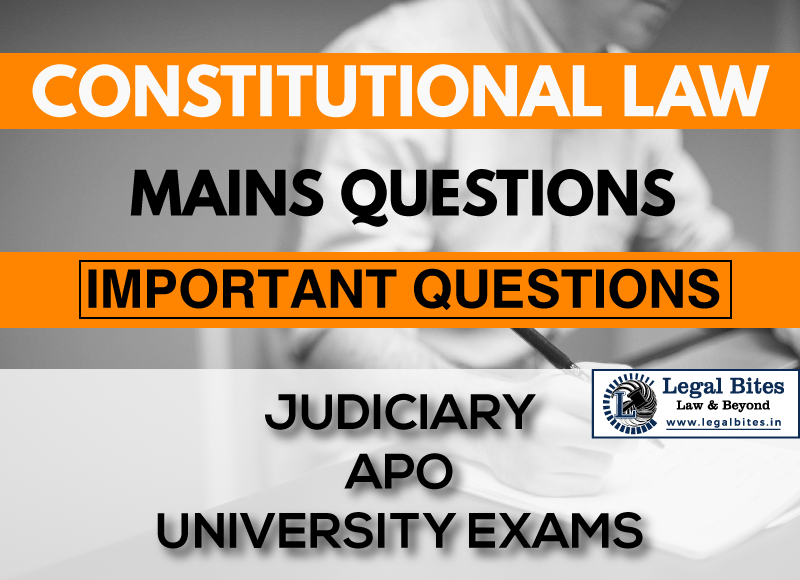What is the nature and scope of jurisdiction vested in the High Court under Article 227 of the Constitution of India?
Question: What is the nature and scope of jurisdiction vested in the High Court under Article 227 of the Constitution of India? [MPJS 2009] Find the answer to the mains question only on Legal Bites. [What is the nature and scope of jurisdiction vested in the High Court under Article 227 of the Constitution of India?] Answer Article… Read More »

Question: What is the nature and scope of jurisdiction vested in the High Court under Article 227 of the Constitution of India? [MPJS 2009] Find the answer to the mains question only on Legal Bites. [What is the nature and scope of jurisdiction vested in the High Court under Article 227 of the Constitution of India?] Answer Article 227 of the Constitution confers 'Power of Superintendence’ on the High Court. According to Article 227 of the Constitution, the High Court is provided...
Question: What is the nature and scope of jurisdiction vested in the High Court under Article 227 of the Constitution of India? [MPJS 2009]
Find the answer to the mains question only on Legal Bites. [What is the nature and scope of jurisdiction vested in the High Court under Article 227 of the Constitution of India?]
Answer
Article 227 of the Constitution confers 'Power of Superintendence’ on the High Court. According to Article 227 of the Constitution, the High Court is provided with the ‘power of superintendence over all Courts and tribunals within its territorial jurisdiction’ which cannot be limited or fettered by an act of the State Legislature.
The supervisory jurisdiction of HC extends to keeping the subordinate tribunals within the limits of their authority and according to law. The powers under Article 227 are wide and can be used, to meet the ends of justice. They can be used to interfere even with an interlocutory order.
This power of superintendence is both administrative and judicial nature, and, such power could be exercised suo motu. When a tribunal has acted within its jurisdiction, the High Court does not interfere unless there is any grave miscarriage of justice or flagrant violation of the law. Its discretionary power has to be exercised sparingly and only to keep subordinate courts and tribunals within the bounds of their authority and not to correct mere errors.
It has been held by the Supreme Court in L. Chandra Kumar v. Union of India, 1997 (2) SCR 1186 that the power vested in the High Courts under Article. 227 is “part of the basic structure of the Constitution”.
In Umaji v. Radhikabai [1986 AIR 1272], the Supreme Court has explained the difference between Article 226 and Article 227. The power to issue writs is not the same as the power of superintendence as the power under Art. 227 is broader than that conferred on the High Court by Art. 226. For example, through its power to issue certiorari under Art. 226, a High Court can annul the decision of a tribunal while under Art. 227 it can do that and do something more– it can issue further directions in the matter. But notably under Article 227, the High Court does not sit as a Court of appeal.
Important Mains Questions Series for Judiciary, APO & University Exams
- Constitutional Law Mains Questions Series Part-I
- Constitutional Law Mains Questions Series Part-I
- Constitutional Law Mains Questions Series Part-II
- Constitutional Law Mains Questions Series Part-IV
- Constitutional Law Mains Questions Series Part-V
- Constitutional Law Mains Questions Series Part-VI
- Constitutional Law Mains Questions Series Part-VII
- Constitutional Law Mains Questions Series Part-VIII
- Constitutional Law Mains Questions Series Part-IX
- Constitutional Law Mains Questions Series Part-X
Admin Legal Bites
Legal Bites Study Materials correspond to what is taught in law schools and what is tested in competitive exams. It pledges to offer a competitive advantage, prepare for tests, and save a lot of money.

